Where to Eat the Best Khinkali in Tbilisi – 2025 Local Guide
Let’s face it — there’s no shortage of places to eat khinkali in Tbilisi, but finding the truly exceptional ones is another story. In this fully updated 2025 guide, I’ve curated a list of the best khinkali in Tbilisi worth your time for their outstanding food quality, warm service, and inviting atmosphere.
Over the years, I’ve tried countless plates of these iconic Georgian dumplings at various khinkali restaurants — some incredible, some forgettable. After much tasting (and sometimes messy slurps), I’ve narrowed the list to spots that I genuinely return to and recommend to friends visiting the city.

Each one offers something special, whether it’s a perfect dough-to-filling ratio, a unique setting, or that feeling of comfort you get the moment the plate hits the table.
Alongside the list, you’ll find my local tips on khinkali types, how it’s made, the best way to eat it, and other essentials, all at the bottom of the post — plus a handy map for convenience.
If you want a broader idea of what else to try when traveling in Georgia, head over to my Georgian cuisine guide for more must-try dishes. And for plant-based travelers, I’ve also got a dedicated post on vegetarian Georgian dishes so you can explore the dumpling scene and beyond without missing out.
Disclaimer: Some of the links in this post are affiliate links, which means I may earn a small commission if you buy something through them—at no extra cost to you. It helps support my blog and lets me share real, first-hand travel tips. Learn more
Where to eat the best khinkali in Tbilisi according to Georgians
I have a few go-to spots I visit whenever the craving for Georgian dumplings strikes. But to make this guide as fair and thorough as possible, I didn’t just rely on my own taste buds — I also asked friends and posted the question in one of the most respected foodie groups on Facebook, home to over 13,000 Georgian members.
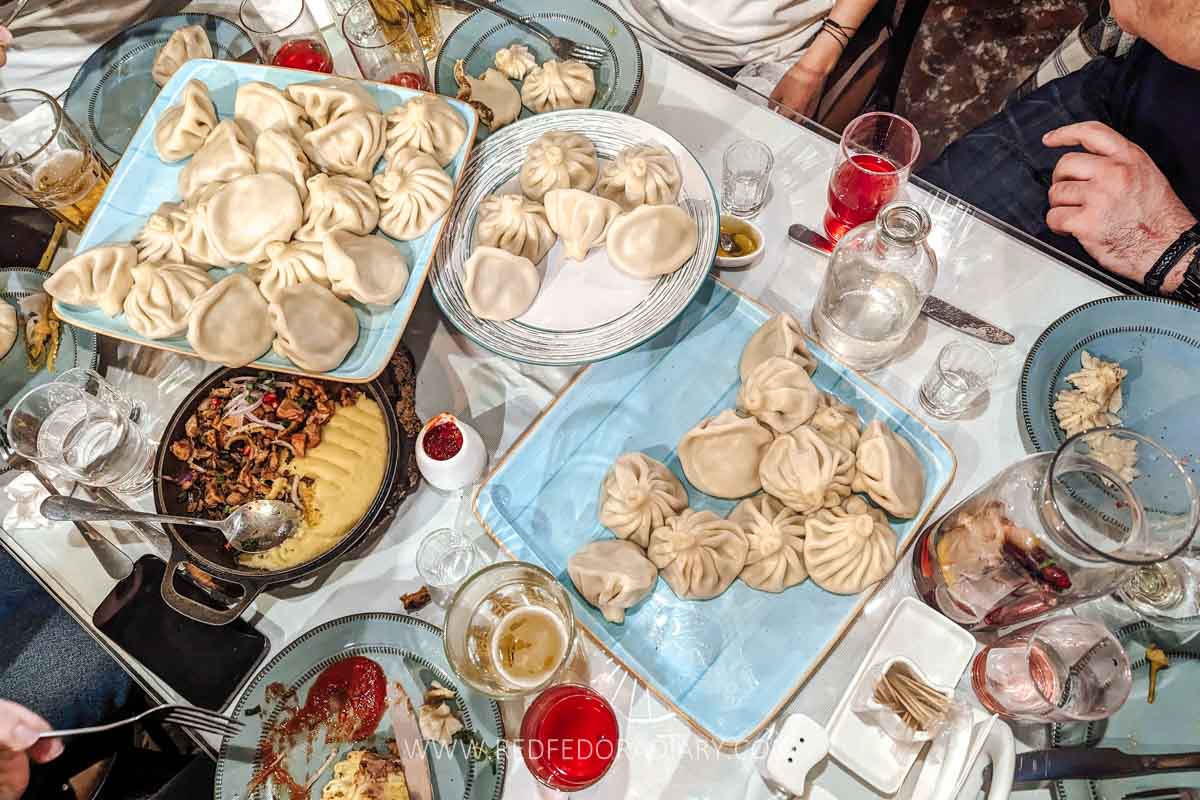
And yes, I made sure to check each recommendation myself before adding it here.
So, to answer the ultimate question: where to eat khinkali in Tbilisi? Here are my personal favorites, along with several highly recommended places that came up again and again during my little “research project.”
Plan Your Tbilisi Trip Like A Pro
💬 Your Trip, Your Way – Crafted by a Local
🚗 Book Your Transfers Before You Land
🛜 Stay Connected from the Moment You Arrive
🏥 Travel Smart with the Right Insurance
Pictograma
Pictograma remains a hidden gem for many — and a point of lively debate among locals. They serve some of the juiciest, most meat-filled Khevsuruli-type khinkali in Tbilisi. This is the traditional mountain-style dumpling, and its distinctive flavor isn’t for everyone, as several locals I’ve spoken with will admit.
That said, if you want to experience authentic mountain khinkali (you can read more about the difference between mokhevuri and kalakuri below the list), Pictograma is the place to go.
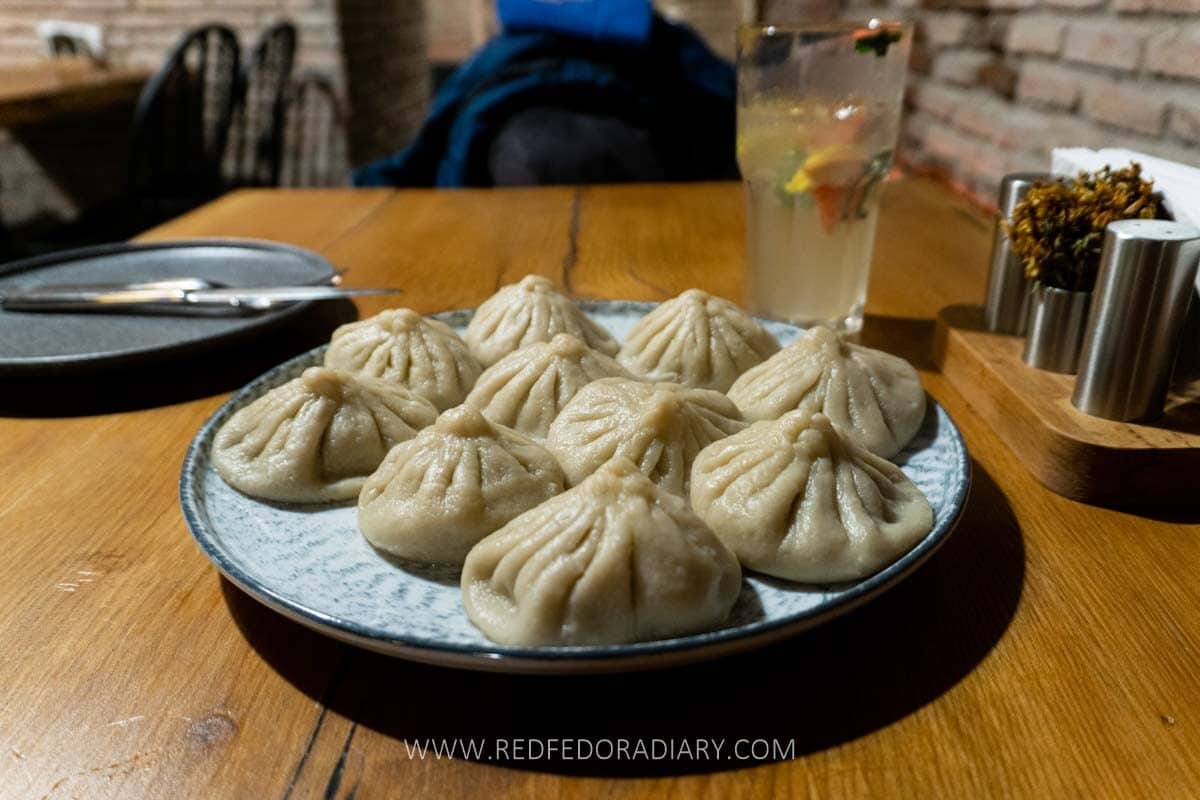
The dumplings are hand-wrapped, with a smaller size than you might expect, but surprisingly filling. The dough has just the right thickness, the meat is perfectly seasoned and fairly fatty — we could barely finish five each.
The menu is small, with only a handful of dishes. We’ve only tried the khinkali here, so I can’t vouch for the other offerings.
Remember that although the official address is Atoneli 31, the entrance is actually from 16 Zurab Gamsakhurdia Named Right Bank.
→ Neighborhood: City Center | under Dry Bridge Flea Market
Klike’s Khinkali
Klike’s Khinkali is one of my favorites for both meat-filled dumplings and an impressive selection of vegetarian khinkali options — the best variety I’ve found in the city.

While the dumplings aren’t hand-wrapped, they’re still full of flavor. If you prefer a lot of broth inside your khinkali with a moderate amount of meat, this is the spot for you. But if you prefer more meat and less juice, it might not be your style.
The menu is small, focused almost entirely on khinkali, but the variety is impressive. Alongside classic meat dumplings, you’ll find mushroom, potato, cheese-potato, nadughi (a ricotta-like cheese), and even spinach-nadughi combinations.
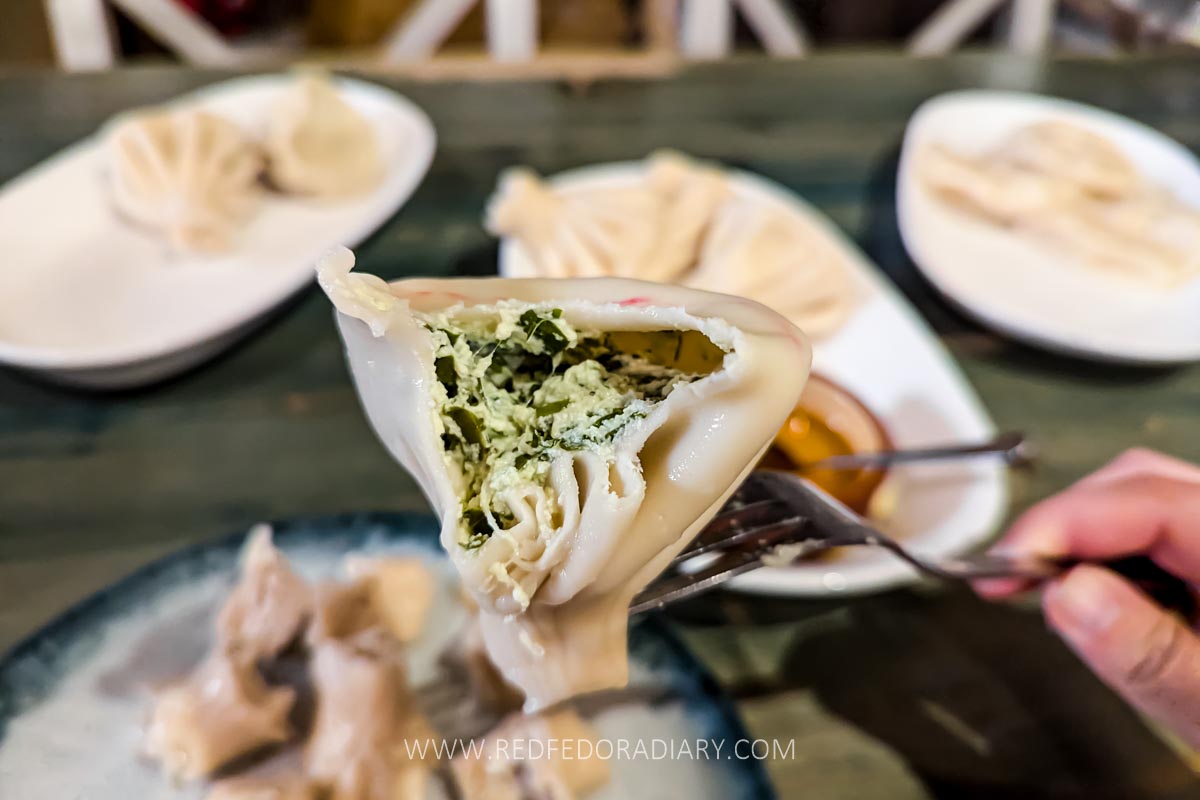
I’ve tried most of them, and while the cheese-potato version leans more potato than cheese (and was my least favorite), the nadughi-cheese khinkali is my all-time love — especially with the melted butter you can pour inside after your first bite. Surprisingly, the spinach-nadughi mix was also excellent.
If you’re curious, try their special sapirmo khinkali, a local twist, though I found it a bit salty for my taste. And for the perfect pairing, order a cold glass of Alkhanaidze beer, a craft brew from Telavi.
→ Neighborhood: City Center | behind the Parliament
Zodiaqo
Zodiaqo is the Tbilisi branch of a well-known Telavi restaurant, and many locals consider it among the best khinkali in Tbilisi. The spacious venue has several rooms and an extensive menu that goes beyond dumplings, offering a range of classic Georgian dishes.
While their kalakuri-style khinkali is flavorful, I personally prefer the nadughi-cheese version over the meat.

Vegetarian khinkali options are limited to a nadughi-sulguni mix and mushroom, but both are well-made. They also have their own special sapirmo khinkali — and while I’m generally not a big fan of fried khinkali, I found this one pretty interesting.
Remember that over the weekend, this place gets packed and they don’t take reservations. Weekdays are usually fine for finding a table.
→ Neighborhood: City Center | below Marriott Tbilisi Hotel
Best Tbilisi Tours & Day Trips – Handpicked by Local
Shemomechama
Shemomechama is a local restaurant chain in Tbilisi that mainly focuses on serving khinkali. The name itself translates to “[it was so good] I accidentally ate the whole thing” — a phrase that perfectly captures the spirit of this place and many Georgians.
The concept is simple: come for a handful of dishes, eat well, and leave satisfied. With its open kitchen, you can even watch the ladies preparing and hand-wrapping the dumplings.
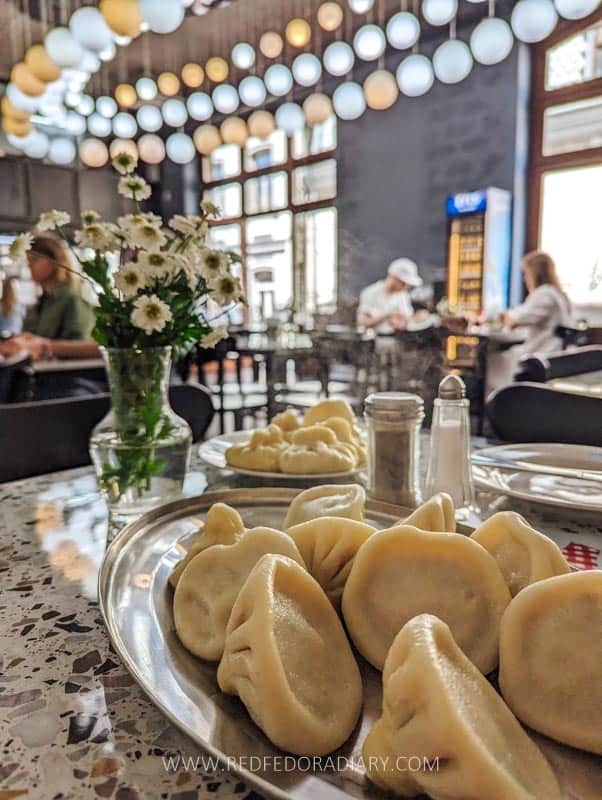

Each branch has its own feel. Some are nostalgic, with minimalist interiors, standing tables, and pared-down menus that remind me of the old-style milk bars I’ve seen in Poland. The Abanotubani location is the fanciest of the bunch, pictured here.
Even the menu reflects the restaurant’s playful character. Dishes are described with slang or tongue-in-cheek adjectives that many locals grew up with, and even the sections have humorous titles — like “not to get bored while you wait for khinkali” for appetizers and “unimportant drinks” for the soft drinks section.
→ Neighborhoods: Multiple branches across the city | Abanotubani, Vake, Saburtalo
Asi Khinkali
Asi Khinkali — literally meaning “100 khinkali” — is another spot Georgians swear by. The restaurant serves eight different types, both meat- and vegetable-based, making it another great choice in town for vegetarian khinkali.
One of their most distinctive dumplings is the sapirmo khinkali, seasoned with tarragon and reminiscent of the Georgian Easter dish chaqapuli. Vegetarian khinkali fillings include mushroom, potato, cottage cheese with sulguni, and a cheese-only version.

They’re also one of the very few places in Tbilisi to serve dambalkhacho khinkali, filled with the unique mold-ripened cottage cheese typical of Racha. Its pungent, musty flavor isn’t for everyone, but it’s worth trying if you’re adventurous.
If you want to expand beyond dumplings, their menu also features hearty Georgian classics like Megrelian pork sausage with tashmijab (mashed potatoes with cheese), ojakuri (fried pork and potatoes), shkmeruli (chicken in garlic sauce from Racha), and several types of khachapuri.
→ Neighborhoods: Chughureti and Saburtalo
Khash-Khash
If you haven’t noticed by now, I have a soft spot for places that make hand-wrapped khinkali — and Khash-Khash is another favorite for well-made Georgian dumplings in Tbilisi.
We came here specifically for the khinkali, but this simple yet slightly upscale venue also serves a wide range of slightly modernized Georgian food, from appetizers and salads to soups, mains, and desserts.

The khinkali were generously sized, slightly juicy with well-seasoned meat, and easy to hold without mess. The dough was just thick enough to keep the broth inside — no spillage!
Alongside, we ordered a classic tomato and cucumber salad, which came loaded with fresh veggies and dressed with a good splash of sunflower oil.
I also loved a few minor details that set Khash-Khash apart: proper napkins on the table instead of tissues, and a massive vintage map of Tbilisi on the wall that’s fun to study while you wait for your food.
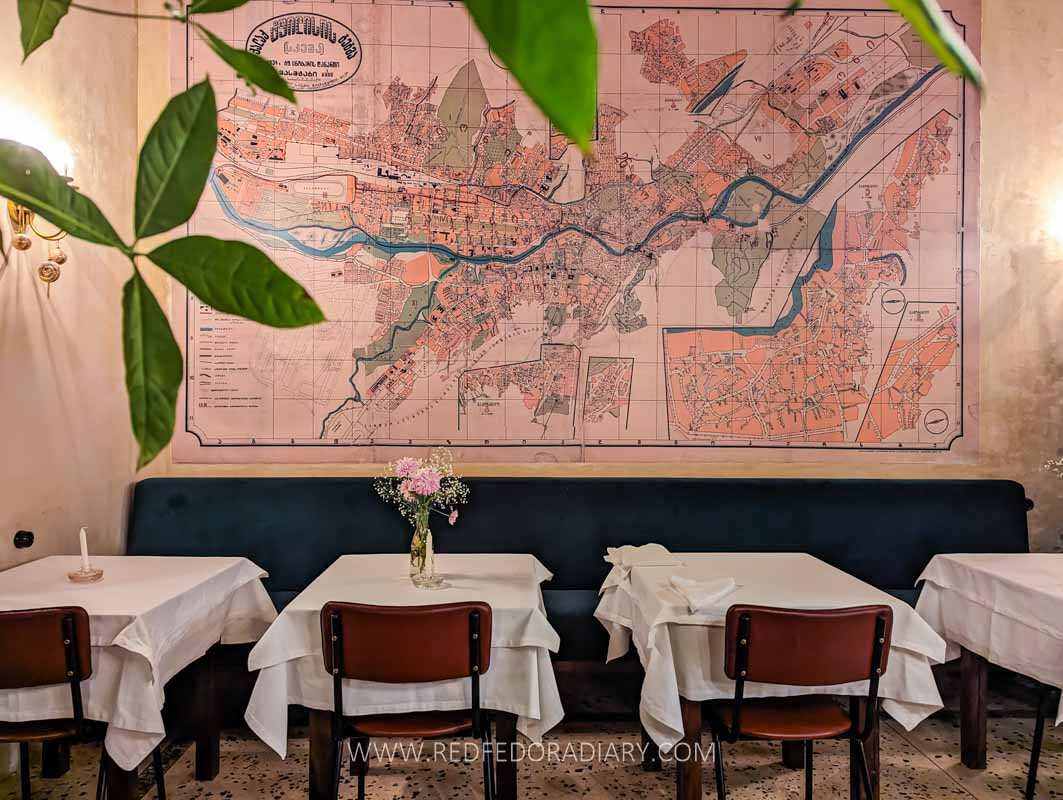
For dessert, they put a modern spin on Georgian sweets with creations like panna cotta topped with pelamushi (grape juice pudding) and walnuts, or korkoti paired with gozinaki. You’ll also find the royal candy kaklucha on the menu. If you’re curious to learn more about these and other traditional sweets, check out my complete guide to Georgian desserts.
→ Neighborhood: Chughureti | near Marjanishvili Metro and Fabrika Tbilisi
Best Hotels in Tbilisi – Where to Stay
Not sure which area suits you best? 📍 Check out my Where to Stay in Tbilisi guide for the top neighborhoods and hotel picks by budget before booking. Here are my quick picks for the best places to stay right now.
Amo Rame Bani
Amo Rame Bani is another excellent choice that locals often rave about. Unlike many other restaurants, they hand-make their khinkali and follow authentic mountain recipes.

Alongside the classic pshauri type, you’ll also find potato and cottage cheese khinkali, plus a menu that mixes Georgian staples with a few European dishes. Their pshauri is juicy, with a well-balanced meat filling and soft dough.
The cottage cheese dumplings are especially memorable — shaped like little fish and surprisingly tasty. The potato version is more on the simple side, but still comforting and flavorful.
→ Neighborhood: Chughureti | near Marjanishvili Metro
Modernized khinkali in Tbilisi
For those curious to see how Georgian chefs are reimagining the country’s most iconic dumpling, a few spots in town take a creative approach. These aren’t the traditional styles you’ll find in most restaurants, but rather playful twists that combine classic fillings with unexpected flavors and presentations.
Mefe da Chiti
I’ve also included Mefe da Chiti in my guide to the best restaurants in Tbilisi, as it’s a place where you can taste traditional dishes with a modern edge. The name translates to “King and the Bird,” and their khinkali are among the most unique I’ve tried.
The fried black bean khinkali with smoked ham stood out — served in a clay pot with jalapeño, cauliflower pickle, and coriander sauce.
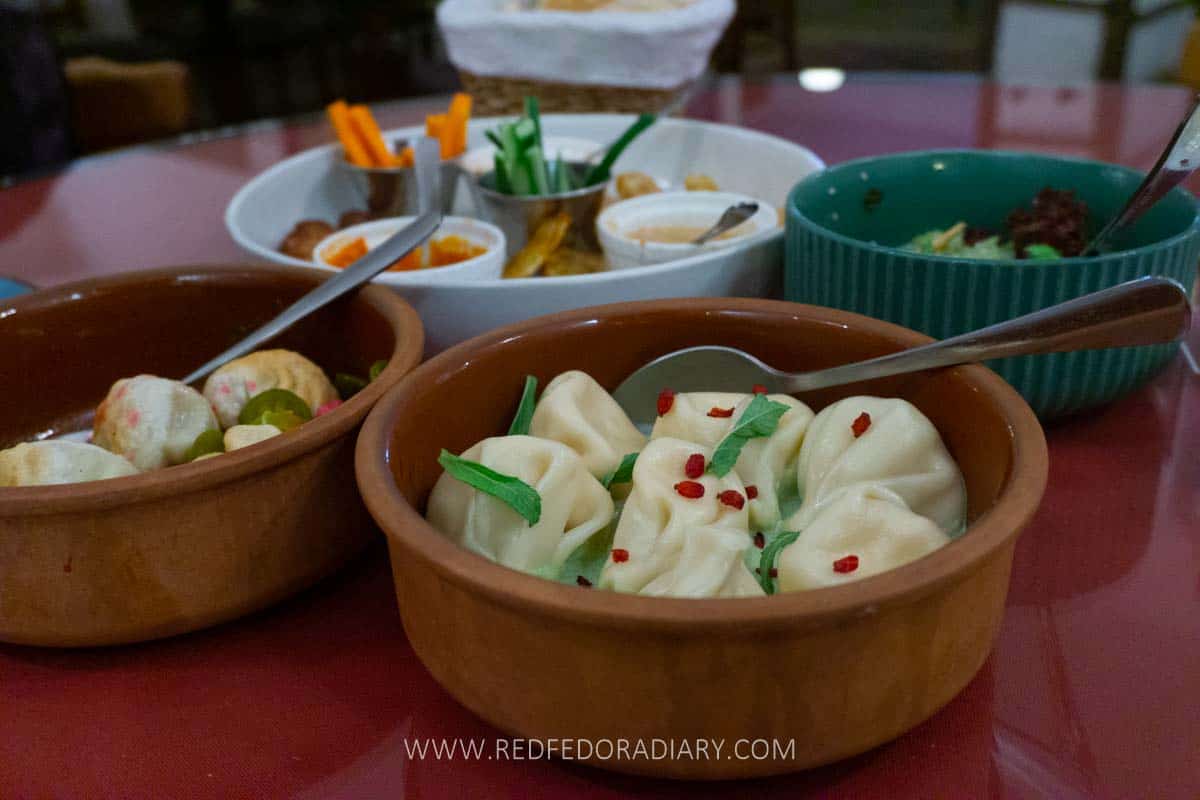
Another favorite was the cheese and nadughi (ricotta-like cheese) khinkali with pesto sauce. The balance of flavors was excellent: creamy cheese inside, fresh pesto on top, and a spicy kick from the jalapeño.
They also serve mushroom khinkali as well as a mountain-style version with a lamb-and-beef mixture, giving you both modern and traditional options in one place.
→ Neighborhood: City Center | behind Opera House
Additional khinkali restaurants in Tbilisi
Not every spot makes it into my main list, but a few restaurants still deserve a mention for their reliably good dumplings and unique touches.
Maspindzelo Express
Just a short walk from Rustaveli Avenue, Maspindzelo Express is a solid choice if you’re craving khinkali late at night. On Fridays and Saturdays, they stay open 24 hours, making it a go-to after a night out.

I’ve already included them in my best places to eat in Tbilisi guide, but their khinkali deserves recognition here as well. I especially love the way they serve it: five pieces arrive in a clay bowl with small holes on the sides. If you order more, the bowls stack neatly on top of each other, keeping the khinkali warm while letting steam escape.
→ Neighborhood: City Center | near Rustaveli Avenue
Pasanauri
Pasanauri is a well-known Georgian restaurant chain, and its namesake dumpling, the pasanauri type, stays very close to the original recipe. They have several branches across Tbilisi, but many locals (myself included) agree that the Griboedov, Leonidze, and Baratashvili street locations serve good dumplings.
The setting is simple but cozy, with wooden tables and chairs and black-and-white photographs of old Tbilisi on the walls. It’s a reliable spot if you want a no-fuss place to enjoy classic Georgian food.
→ Neighborhood: City Center | near Rustaveli and Freedom/Liberty Square Metros
Vakhtanguri’s Chebureki
Vakhtanguri’s Chebureki in Avlabari is best known for its delicious chebureki — a fried street food popular during the Soviet era.
While that’s their signature dish, the menu also covers Georgian staples like khinkali, khachapuri, mtsvadi, and lobiani.

It’s more of a homestyle spot than a specialized khinkali restaurant, but still worth a try if you’re in the neighborhood.
→ Neighborhood: Avlabari
Sofia Melnikova’s Fantastic Douqan
I know some locals may raise an eyebrow seeing Sofia Melnikova’s Fantastic Douqan on this list. A few years back, their khinkali had a poor reputation in Tbilisi. But with a change of management, new chefs, and an updated menu, things have improved significantly.

The restaurant itself is lovely — a courtyard shaded by grapevines, perfect for summer evenings, with indoor seating available during colder months.
The menu blends Georgian and international dishes, and the khinkali now holds its own. Their kalakuri type is well seasoned with a good balance of broth and meat filling. The only drawback is the slightly thicker dough, which sometimes doesn’t boil through evenly.
→ Neighborhood: City Center | off Rustaveli Avenue
Best Khinkali in Tbilisi Map
For more convenience, I have created a Google Maps list of all the Khinkali restaurants in Tbilisi for you to save and use whenever you need it. If you download the area for offline use, you will not need the data to access the spots
Everything you need to know about khinkali in Georgia
The origins of khinkali in Georgia
Khinkali traces its roots to the mountain regions of Pshavi, Tusheti, and Khevsureti before spreading across the rest of Georgia and evolving into different variations.
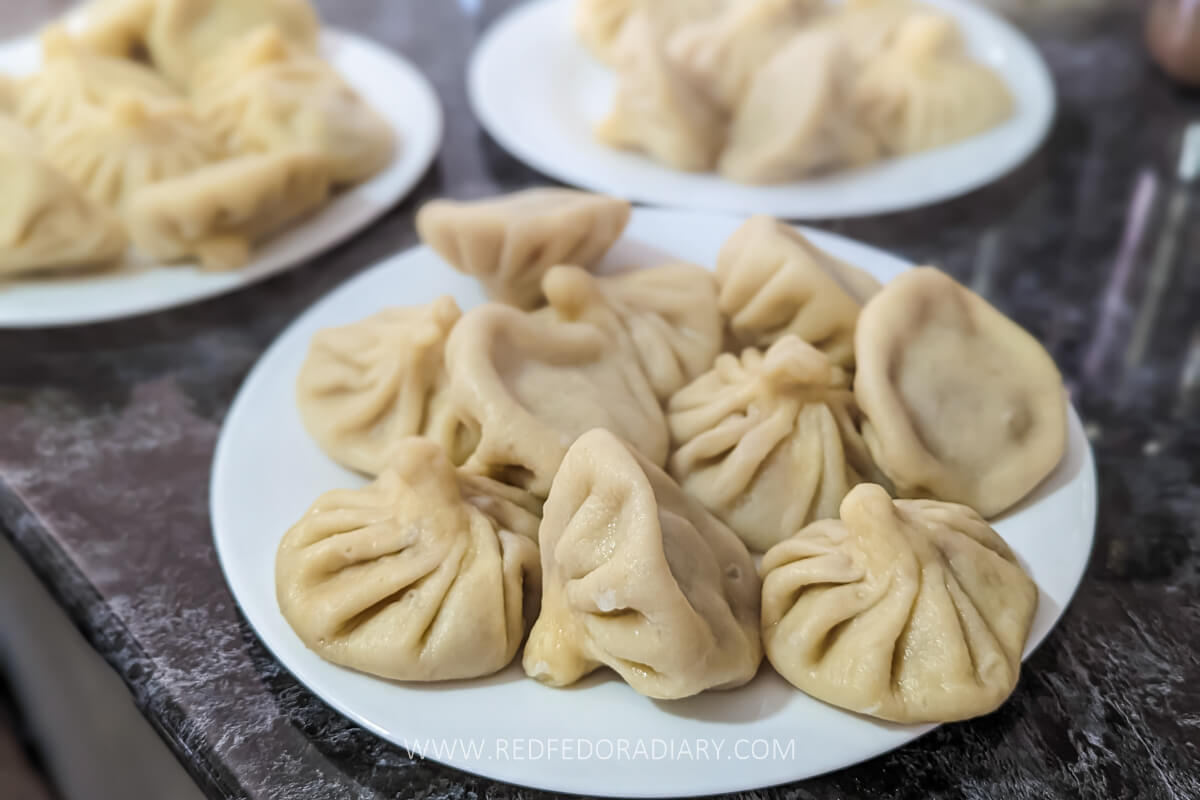
Traditionally, khinkali was always made by hand — kneading the dough, preparing the filling, and carefully twisting each dumpling shut.
Today, many restaurants rely on machines to speed up the process, but hand-wrapped khinkali remains more authentic and, in my opinion, far more delicious.
Types of khinkali: mokhevuri vs kalakuri
When it comes to khinkali, two main types dominate the table: khinkali mokhevuri vs kalakuri.
The authentic mountain recipe, known as mokhevuri (also called khevsuruli or mtiuluri), uses a simple yet hearty filling of minced meat — traditionally a mix of pork and beef or sometimes lamb — with onions, chili pepper, cumin, and salt.
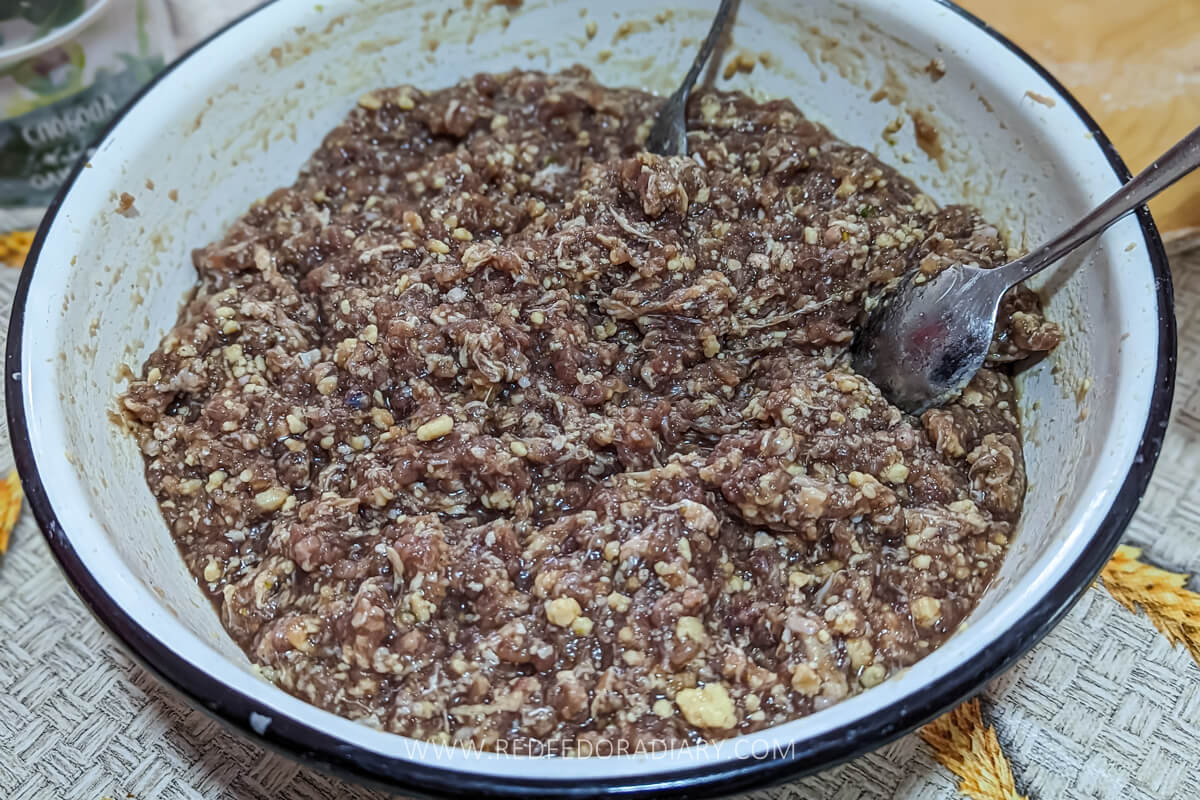
If you don’t eat pork, it’s worth asking your server which meat mixture they use, as menus don’t always specify. In the past, lamb was the most common choice in Georgia’s highlands, though today it’s much harder to find outside a few select restaurants.
The second type, khinkali kalakuri or “the city version,” is a slightly modernized take. It keeps the same base meat mixture but adds fresh herbs like parsley and cilantro, giving the dumplings a lighter, more aromatic flavor.
Vegetarians aren’t left out either. Many Tbilisi restaurants now offer fillings such as mushrooms, spinach, potatoes, sulguni or cottage cheese, and even seafood.
How khinkali is made
The preparation process for khinkali is quite different from that of Asian dumplings. After kneading the dough and rolling it into thin circular shapes, uncooked meat is placed in the center.

The edges are carefully pleated and twisted together at the top, creating the iconic little “handle,” called kuchi in Georgian, meaning “stomach.”
The dumplings are then dropped into a large pot of boiling water and cooked until they rise to the surface. During boiling, the meat releases juices that turn into a flavorful broth inside the dough — the signature surprise of every good khinkali.
How to eat khinkali
Eating khinkali comes with its own etiquette. They’re meant to be eaten with your hands — never with a knife and fork. Once they arrive at the table (usually piping hot), let them cool for a minute so you don’t burn your mouth or hands.

Take a small bite at the side and slurp the broth first, making sure none spills onto your plate. Then, continue eating the dumpling like usual. A skilled khinkali eater won’t leave a single drop on the plate.
The hard doughy top “handle”, kuchi, is usually set aside. Locals use it to count how many dumplings someone has eaten.
If you feel uncomfortable eating with your hands, you can hold the top with a fork, as shown in the picture, but in the mountain regions, using utensils is considered impolite.
Portions and what to drink with khinkali
Georgians typically order khinkali in multiples of five, such as 5, 10, 15, and so on. Even if you’re dining solo, the minimum order is five pieces.

After that, it’s fine to go for odd numbers like 6 or 8, but keep in mind that if you want to try different types, you’ll still need to order at least five of each kind.
Some modern restaurants serve khinkali “by portion” rather than by piece, but this is less common.
As for drinks, Georgians almost always pair khinkali with beer or lemonade — never with wine.
Khinkali price in Tbilisi
Khinkali prices vary slightly from restaurant to restaurant, but you can expect to pay anywhere between 2.40 GEL and 3 GEL per piece. More specialized khinkali, such as dambalkhacho aged cottage cheese, can be around 4-5 GEL a piece.
Most places fall in the 2.40–2.60 GEL range, whether you’re eating at a casual spot or a well-known restaurant in the city center.
It used to be noticeably cheaper to order khinkali across Georgia, but today, prices in popular restaurants outside Tbilisi are fairly similar. That said, you can still find budget-friendly eateries in smaller towns or less touristy neighborhoods where a plate of dumplings will cost you a little less.
Interestingly, there’s not much of a difference between “local” and “touristy” places in Tbilisi — khinkali prices tend to be consistent no matter where you go.

